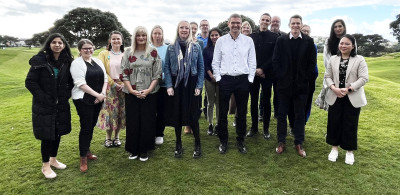Serious traumatic brain injury national collaborative concludes in Wellington
The second phase of the serious traumatic brain injury (sTBI) national collaborative came to a close on Tuesday 13 June with the final learning session held in Wellington for the four participating teams. A total of nine teams from across Aotearoa New Zealand have participated in the collaborative, which ran in two phases from October 2022 through to June 2023.

Above: Members of the serious traumatic brain injury national collaborative when they met recently in Wellington
The aim of the collaborative has been to promote national consistency in the screening and assessment of post-traumatic amnesia (PTA) in patients who have experienced trauma. Accurate assessment of PTA duration is a key indicator of a patient’s functional outcome and is used to determine their eligibility for rehabilitation services. The overarching goal of this work is to ensure that all New Zealanders have equitable access to appropriate hospital and rehabilitation care following a brain injury, no matter where they live.
Teams undertook change ideas including developing screening protocols within their hospital systems to flag patients at risk of TBI, incorporating the Westmead PTA assessment into existing online guidelines and paper-based protocols, undertaking training for allied health and nursing staff to accurately assess patients for PTA and developing posters and visual aids, such as lanyard cards, to remind staff to screen and refer patients for assessment.
The project saw a sustained increase in PTA screening at both Nelson Marlborough, a smaller regional centre, and Waitaha Canterbury, a larger tertiary centre. Te Toka Tumai Auckland, which already had a high rate of PTA screening, focused its efforts on non-neuroscience wards. Te Pae Hauora o Ruahine o Tararua MidCentral extended its work to include screening in its emergency department as well as its inpatient wards.
Te Tāhū Hauora is now looking to promote the work of these nine teams to other hospitals across Aotearoa. This promotion combined with support for organisations to implement changes within their local services will ensure national consistency in PTA screening and improve the overall care of trauma patients.
Additionally, the end of the collaborative coincides with another important milestone in the sTBI work programme, the publication of the sTBI action plan and care pathway . Te Tāhū Hauora has worked with services in each trauma region (Northern, Te Manawa Taki Midland, Central and South Island) to develop a single point of contact and an accelerated pathway for sTBI patients to move from non-neuroscience hospitals to the tertiary neuroscience centre in their region, so that they can benefit from expert medical, nursing and allied health care for their injury.
